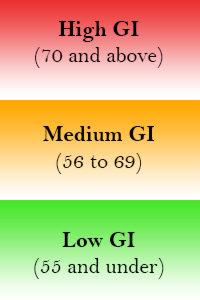Lose Weight > Common Sense To Lose Weight > Common Sense Article > Is the 80/20 Diet a Cheaters Dream?
Is the 80/20 Diet a Cheaters Dream?
 What's standing between you and your goal weight? If it's pasta, pizza or apple pie, the 80/20 diet might seem like the perfect compromise. With this plan, followers adhere to a healthy diet 80 percent of the time, and then anything goes (yes, even that sinful slice of chocolate cake) for the remaining 20 percent. Making headlines for its star-studded devotees—celebrity enthusiasts include Jessica Alba, Olivia Munn, Cameron Diaz and Miranda Kerr—the diet is billed as the best of both worlds, but is it really as simple as it seems?
What's standing between you and your goal weight? If it's pasta, pizza or apple pie, the 80/20 diet might seem like the perfect compromise. With this plan, followers adhere to a healthy diet 80 percent of the time, and then anything goes (yes, even that sinful slice of chocolate cake) for the remaining 20 percent. Making headlines for its star-studded devotees—celebrity enthusiasts include Jessica Alba, Olivia Munn, Cameron Diaz and Miranda Kerr—the diet is billed as the best of both worlds, but is it really as simple as it seems?In theory, it can be. When you truly stick to clean, nutritious foods for 80 percent of meals, the good far outweighs the bad, which means those occasional indulgences won't wreak havoc on your health. The 80/20 rule offers a welcome reprieve from restrictive "all or nothing" diets that often result in failure and frustration.
"The more you try to eliminate your favorite foods, the more feelings of discomfort, deprivation and resentment build up," says Dean Anderson, a behavioral psychology expert. "This can result in bingeing on all the foods you’ve been denying yourself, undoing all your hard work in a single day."
When you enjoy foods you love in moderation rather than banishing them altogether, you'll be less likely to succumb to cravings during non-cheat times—which means enjoying that fried chicken on Sunday makes it easier to choose the grilled chicken and broccoli on Monday.
SparkPeople's registered dietitian, Becky Hand, has many clients who successfully follow this type of diet, selecting "good" foods 80 percent of the time and "bad" foods for the remaining 20 percent. However, Hand prefers to use the term "calorie banking" instead of "cheating."
"Calorie banking is so much more positive—it shows how all foods can fit into one's diet, how the person plans for such an event, how the person still remains in control versus the food controlling the person," says Hand. "It incorporates having a healthy relationship with food instead of the ongoing battle that so many dieters experience day after day."
Potential Drawbacks of the 80/20
Although the 80/20 diet may work for some, others may find it to be their downfall—primarily because the definition of "healthy" and "cheating" or “good foods” and “bad foods” are up for interpretation, as are portion sizes and calorie counts. Splurges are subjective: One person's idea might be a small bowl of ice cream, while others could devour the entire pint.In her article on the impact of cheat days, Hand compares two scenarios to demonstrate how each would impact a dieter's progress:
- Scenario #1: On your cheat day, you indulge in a few extra sweets or treats and take in 2,500 calories total. This brings your daily average to 1,514, which is still within your weight-loss calorie range. Therefore, you should still lose weight for the week.
- Scenario #2: On your cheat day, you eat anything and everything you've been craving: a fast food value meal, potato chips, a milkshake and some buttery popcorn. You take in 4,000 calories. This brings your daily average to 1,729, which is over your weight-loss calorie range. Therefore, you will probably maintain your current weight for the week.
What Our Members Say
Some members have expressed doubts about the 80/20 diet. “That would kill my weight loss,” says CAROLYNSUE17. “I find that I have to stick to a plan. It is a treacherous path to allow this kind of cheating, because you (may) have a weight problem from rewarding yourself too much.”HAZELNY30 follows a modified version of the diet, scaling back the 20 percent. “I try to have one treat meal a week,” she says. “Not days of cheating. I used to do that and I would just gain the weight I lost throughout the week. I treat myself to a big plate of pasta and one cookie every Friday for dinner.”
While some prefer to spread their 20 percent throughout the week, others save it up for one splurge. “Sunday dinner is my splurge,” says PEEJMA. “It might be pasta with sausage ragu, pizza or a burger and fries. I eat as much as I want and stop when I'm satisfied, not uncomfortable. Some people like to have a treat daily, or a few times a week, but I prefer to be very regimented Monday through Saturday and then do what I want for that meal.”
ACTIVEGRANDMAP says that as long as you’re tracking everything and staying within your calorie range, there can be room for some less than healthy food. SWANATOPIAS has lost 80 pounds using the 80/20 diet, with the 20 percent usually falling on the weekends.
If You Try It
If you're planning on giving the 80/20 diet a whirl, keep these guidelines in mind:- Calculate percentages based on meals, not days. If you assume that you can eat anything and everything for 20 percent of the time, which equates to roughly one and a half days out of the week, you could do some serious damage to your weekly caloric intake. Instead, calculate the percentage in terms of meals and servings, so that 80 percent of all calories comes from nutritious, clean foods and 20 percent comes from splurges.
- Plan the 80 wisely. The "good" part of your diet should come primarily from lean meats, fish, fruits, non-starchy veggies, low-fat dairy, beans, nuts and whole grains. Include plenty of fiber and protein to keep you feeling fuller longer, which will help to curb cravings.
- Make the 20 count. For the splurges, don't settle: Choose the foods from your top five favorites, so you get the most gratification. Savor every bite without distractions.
- Embrace a variety of foods. Hand points out that no single food causes weight gain. "Weight management is based on total calorie intake—not the restriction of certain foods, ingredients or food groups," she says. "All foods can fit into a healthy eating plan."
- Don't mistake thirst for hunger. By drinking water and other hydrating fluids throughout the day, you'll keep cravings at bay and promote healthy metabolic function.
- Add the essential ingredient: exercise. According to the American Heart Association, adults should strive for 150 minutes of moderate exercise or 75 minutes of high-intensity exercise, along with at least two days of moderate to high-intensity strength training, per week. This will burn more calories, boost your metabolism and help to counteract the 20 percent of "cheat eating."
Related Articles
-
5 Motivational Tips To Help You Lose Weight
It can feel quite difficult trying to lose weight, sometimes even more
-
The Diet Solution Program Scam Explained
Is the weight loss plan answer program pretty much as good as it cl
-
Information On Acai Berry - What You Ought To Know
Information on Acai Berry is scarce even if this fruit was introduced
-
Does The Size Of Your Stomach Shrink When You Eat Less?
Most of us know that the
-
Weight Loss Programs And Pills Is Your Weight Loss Program Safe And Effective
In this age being ignorant is like committing a crime. With so much of
-
Burn Fat Quickly With This Fat Burning Work Out
In case you have created the new year’s resolution to lose weigh
- DON'T MISS
- Quick And Healthy Weight Loss - Rapid Weight Loss Ideas
- How to Eat Out and Remain Healthy at the Same Time!
- How Visualization Strategies Can Be Used To Help You Shed Weight
- Inspiring Passion within Your Kids
- Pride And Prejudice Why Elizabeth Bennett Never Got Fat
- Is it Possible to Lose 15 Pounds in 2 Weeks?
- 5 Steps To Finding The Best Diet
- The Secret to Using Oolong Tea to Lose Weight
- A Slimmer, Sexier You in 2011
- How Weight Loss Can Be Fun And Affordable




